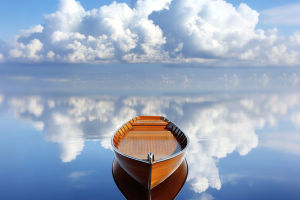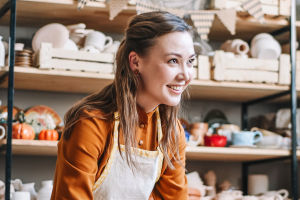Welcome, Lykkers! For those living in busy cities and are passionate about photography, the idea of starting a personal studio might seem too expensive or space-limited.
With rent, electricity, gas bills, and additional service fees, maintaining a professional studio can easily exceed €1000 per month. Add the cost of assistants, stylists, and models, and the numbers become even more discouraging.
However, a clever and practical solution exists: building a home photography studio.
Start Small, Think Smart
Choosing the Right Space
Unused rooms such as attics, basements, or even a corner of the living room can be transformed into creative studios. These areas can be arranged temporarily or permanently depending on how often the space is needed.
The important step is to evaluate the type of photography being done. A smaller space works perfectly for food or product photography, while full-body portraits require more room—at least 5 x 7 meters is recommended for flexibility and comfortable movement.
Set a Realistic Use Plan
If photography is going to be a regular activity, dedicating a full-time space and investing in durable equipment is advisable. On the other hand, if it's a part-time passion or occasional work, foldable and lightweight equipment allows for fast setup and easy storage.
Setting Up the Perfect Environment
Room Conditions Matter
Space selection doesn’t end with floor area. The height of the ceiling is essential too, especially when working with artificial lighting setups. Low ceilings may interfere with light positioning, making it difficult to get professional results.
Room color is also a key element. While black walls provide total control over lighting, they can feel unwelcoming. Instead, opt for white walls and ceilings combined with thick dark curtains or removable black panels to manage reflections when needed.
Floor and Window Adjustments
Light-colored floors can reflect too much light and should be covered with dark fabric when necessary. For photographers who prefer to work with artificial light, blackout curtains or blinds are essential to eliminate unwanted daylight. The goal is to have full control over how the light behaves in the room.
Using Natural Light Effectively
Harness the Power of the Sun
Natural light is free, abundant, and excellent for achieving soft, atmospheric photos. For those not yet ready to invest in artificial lighting, positioning a subject next to a large window is a great start.
The ideal layout is to place the backdrop at a right angle to the window, which helps create depth and contrast. Direct sunlight, though, may be too harsh. A white curtain or diffuser fabric can soften the light, making it more suitable for portraits or detailed shots.
Balance with Reflectors
To reduce shadow intensity, a collapsible reflector on the side opposite the window can be used. A five-in-one reflector allows for switching between white (to gently fill shadows) and silver (for stronger light bounce). For solo photographers, a light stand with a clip can hold the reflector, making it easier to control light without assistance.
Artificial Light and Basic Gear
When the Sun Sets
Even though natural light is wonderful, it can be unreliable, especially during evening hours or in darker rooms. In these cases, a flash unit (speedlite) provides consistent results. These are more affordable than full studio lights and work well in compact spaces.
Make sure the flash is compatible with the camera and consider getting a wireless trigger for more creative freedom.
Soften That Light
Direct flash can be too harsh, but light shapers like umbrellas and softboxes can diffuse it. Umbrellas are simple, affordable, and effective for beginners. Softboxes, especially with grids, offer more precision in light direction and control. A large octabox is also a great option for soft, even lighting. Start with basic equipment and gradually expand based on the type of photography being done and available space.
Conclusion
Lykkers, building a photography studio at home isn’t just achievable—it’s exciting. With a bit of planning, even a small area can become a creative playground.
Start by evaluating the available space, light sources, and photographic goals. Begin with essential equipment and gradually enhance the setup as needs grow. Whether it’s portraits, food, or lifestyle photography, a home studio offers the flexibility to create at your own pace—without unnecessary expenses or complicated logistics.
Home Photography Studio Checklist
✅ Choose a suitable room or corner with enough space
✅ Determine your photography focus (portraits, products, etc.)
✅ Ensure ceilings are high enough for proper light placement
✅ Paint walls white and prepare dark curtains or panels
✅ Cover light-colored floors when necessary
✅ Install blackout curtains or blinds
✅ Use large windows for natural lighting
✅ Soften daylight with white curtains or diffusers
✅ Use reflectors to manage shadows
✅ Start with a compatible speedlite flash
✅ Use umbrellas or softboxes to soften flash light
✅ Gradually add more equipment based on need
✅ Keep everything compact and easy to store if space is shared
Ready to shoot, Lykkers? Let the creativity flow, one frame at a time!


